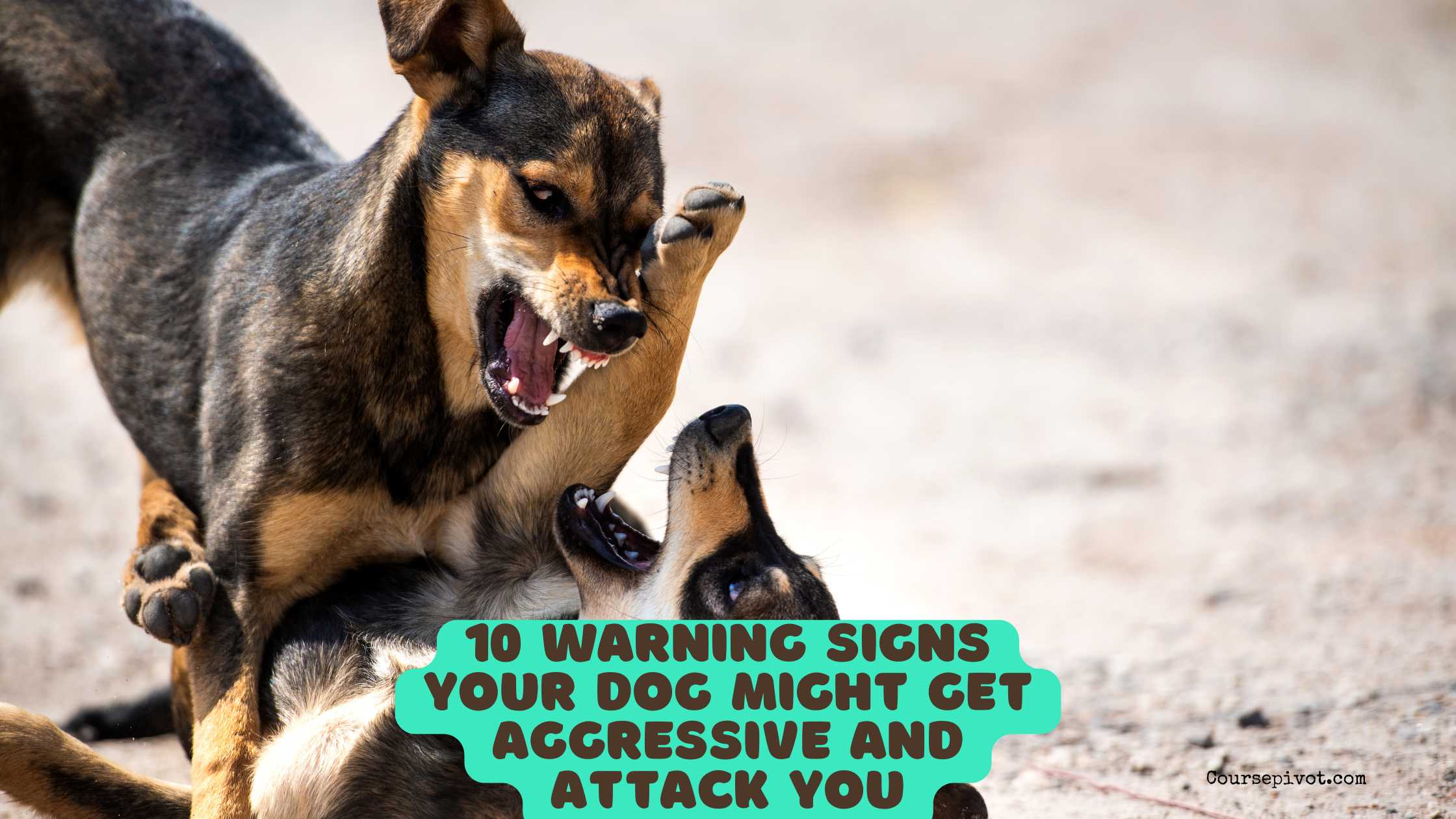
10 Warning Signs Your Dog Might Get Aggressive and Attack You
Every year, roughly 4.5 million dog bites occur in the United States alone, and a surprising number happen between dogs and their own owners (according to the Centers for Disease Control and Prevention). Most of these incidents aren’t random — the dog was sending clear signals long before teeth met skin. Learning to read those signals can literally save you from a trip to the ER.
Table of Contents
Dogs rarely “snap” without reason. Aggression is almost always the final stage of a stress ladder they’ve been climbing for seconds, minutes, or even weeks. Here are ten of the most reliable warning signs that your dog is feeling threatened, overwhelmed, or pushed past their limit.
Sudden Stiffness or “Freezing”
One moment your dog is wagging, the next they go statue-still. This hard freeze — body rigid, muscles tense, movement stopped — is one of the strongest predictors of an impending bite. Many owners misread it as “being good” when it actually means “back off now.”
Whale Eye (Whites of the Eyes Showing)
You know that sideways glance where the whites of your dog’s eyes become clearly visible? That’s called whale eye or half-moon eye. It usually appears when the head is turned away but the eyes stay locked on whatever is bothering them. It’s a classic “I’m uncomfortable and watching you” signal.
Excessive Yawning or Lip Licking
Yawning when tired is normal. Yawning repeatedly while you’re reaching for their collar, hugging them, or staring at them? That’s a calming signal — the dog’s polite way of saying “I’m stressed, please ease the pressure.” Rapid lip licking, nose licking, and blinking fall into the same category.
Raised Hackles (Piloerection)
When the hair along your dog’s back and neck stands up, it’s an involuntary response to arousal — fear, excitement, or anger. Raised hackles alone don’t mean aggression, but combined with stiff body language, hard staring, or growling, it’s a red flag.
Hard Staring and a Closed Mouth
A soft, relaxed face usually has a slightly open mouth and loose eyes. The moment the stare gets intense, the mouth slams shut, and the ears move forward, you’re looking at a dog who is deciding whether to act. Direct eye contact from you at this point often escalates things fast.
Growling, Snarling, or Showing Teeth
Most people finally notice the problem here — and that’s the mistake. Growling is communication, not a threat; it’s your dog saying “I’m seriously uncomfortable and I’ll defend myself if you keep going.” Punishing a growl teaches dogs to skip the warning next time.
Displacement Behaviors That Look “Random”
Sudden frantic scratching, shaking off as if wet when they’re dry, or obsessively sniffing the ground are all displacement behaviors. Dogs do these when they’re conflicted — they want to leave the situation but feel trapped, so they redirect the stress into something else.
Avoiding or Hiding vs. Normal Retreat
A dog that casually walks away is managing their own comfort. A dog that slinks low, ears pinned back, tail tucked, and tries to hide behind furniture or even behind your legs is showing fear-based avoidance. Cornering a dog in this state is one of the fastest ways to trigger defensive aggression.
Resource Guarding Escalation
If your dog has ever stiffened, growled, or snapped when you approached their food bowl, toy, or sleeping spot, that’s resource guarding. Many owners think “I’ll just take it away and show them who’s boss.” That approach frequently leads to worse bites later. Hard guarding of “weird” items (a stolen sock, your spot on the couch) is still guarding.
A Rapidly Wagging Tail — Yes, Really
A common myth says “wagging tail = happy dog.” Not always. A fast, stiff wag — especially low or held high and vibrating — often appears right before a bite. Watch the whole body: happy wags come with loose hips, soft eyes, and play bows. Stiff, rapid wags come with tension.
Practical Steps to Lower the Risk
Catch these signs early and you can almost always de-escalate. Here’s what actually works:
- Give space immediately — turn sideways, avoid eye contact, and back away slowly.
- Stop whatever you were doing — hugging, petting their head, reaching over them, taking something away.
- Teach an “all done” or “enough” cue so your dog learns they can ask you to stop without growling.
- Never punish growling — you’ll remove the warning system.
- Work with a certified trainer or behaviorist if you’re seeing several of these signs regularly. Force-free, reward-based methods are the gold standard (according to the American Veterinary Society of Animal Behavior).
Why Recognizing These Signs Matters More Than Ever
Modern life puts dogs in situations their ancestors never faced — prolonged eye contact, tight hugs from strangers, toddlers climbing on them, constant resource competition. Even the sweetest family dog has genetic limits. Reading the ten signs above isn’t about fearing your dog; it’s about respecting them enough to keep everyone safe.
Key Takeaways
Most bites are predictable if you know what to look for. Freezing, whale eye, growling, and stiff body language are honest communications, not disobedience. The moment you see a cluster of these signals, change the situation instead of pushing through. A few seconds of awareness can prevent a lifetime of regret — and keep both you and your dog happy for years to come.
Your dog isn’t giving you a hard time. They’re having a hard time. Listen early, act calmly, and you’ll rarely need to worry about the next step on the ladder.
Cite this article
You can copy and paste your preferred citation format below.
Martin, L. & Arquette, E.. (2025, November 20). 10 Warning Signs Your Dog Might Get Aggressive and Attack You. Coursepivot.com. https://coursepivot.com/blog/10-warning-signs-your-dog-might-get-aggressive-and-attack-you/



